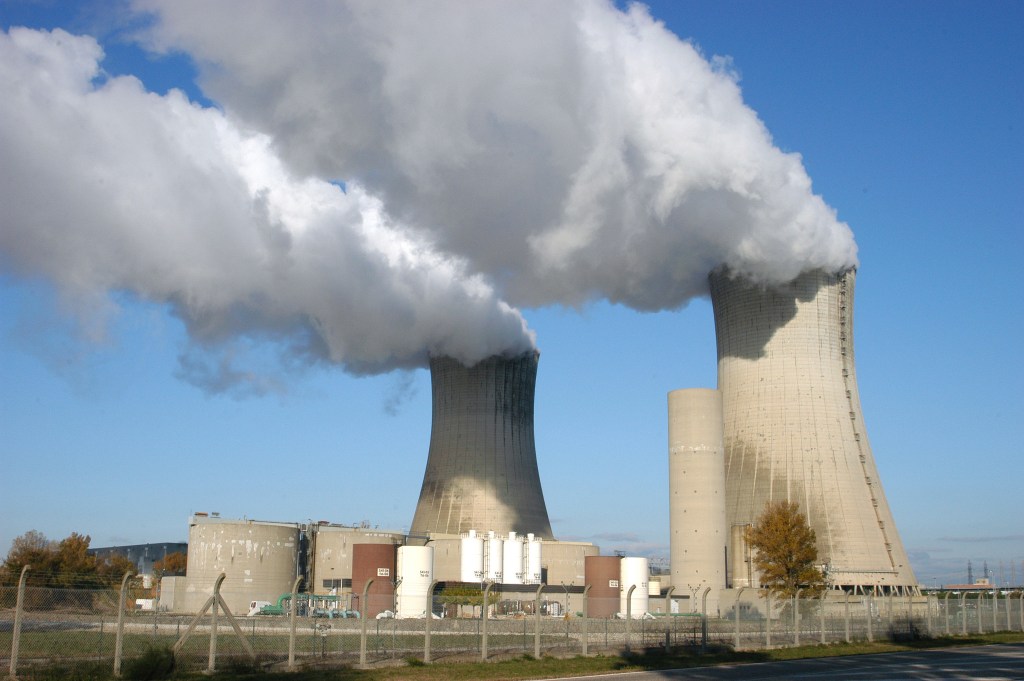In March of 2011, the Fukushima nuclear reactor in Japan experienced one of the largest meltdowns in history following a major earthquake. In the aftermath of this catastrophic event, which displaced some 174,000 locals, the US Nuclear Regulatory Commission (NRC) decided it was time to update the national protocols for storing spent nuclear waste.
By July 2011, the NRC released its new recommendations, which resulted in a three-tiered program for updating the US nuclear safety regulations, such as making it easier to add more water to spent fuel pools, where radioactive waste is stored.
Videos by VICE
While this is certainly a step in the right direction, according to a policy article published today in Science , the NRC program underestimated the danger posed by current waste storage standards and, in the process, has put millions of lives at risk.
The main point of contention in the article—which builds on previous research challenging the NRC’s policy recommendations, including an independent review by the National Academy of Sciences—is the use of spent-fuel pools as the default storage method at nuclear reactor sites. Typically, after nuclear fuel rods are used at one of the 99 reactors currently online in the US, they are stored in a large pool for at least five years. (Water cools them down and provides shielding from radiation.) Then the rods are transferred to dry storage containers onsite at the reactor—in theory, anyway.
Watch Motherboard’s documentary on nuclear power in 360/VR:
The problem is that most nuclear reactor operators in the US don’t proactively remove spent fuel from the pools because the NRC doesn’t see using pools as semi-permanent storage as a problem. According to the Science paper, nuclear utilities treat the pools as default storage containers, fill them to capacity and and only transfer waste to dry storage when space in the pool is running low.
While this might save some cash for the utility, it also significantly increases the risk of a fire at the reactor. According to the authors of the new policy paper, the release of radioactive material resulting from a fire at a spent-fuel pool filled to capacity would result in about $2 trillion in damage and the relocation of some eight million people, on average.
These numbers differ significantly from those found in the NRC’s own analysis.
Although the commission acknowledged that expediting the transfer of spent fuel to dry storage could reduce radioactive releases from pool fires by 99 percent, it also estimated that a pool fire would only result in about $125 billion in damages at an average nuclear reactor—almost 20 times less than the estimate put forth in the Science article.
Moreover, the NRC assumed that fallout would be limited to a 50-mile radius and that residents within this area would be able to return to their homes within a year.
On the basis of its analysis, the NRC decided that there was no scientific justification for initiating an expedited spent fuel transfer. As an NRC spokesperson explained to me on the phone, a number of NRC reviews not only found the likelihood of a pool fire to be extremely low, but US nuclear plants have the ability to prevent or mitigate this type of event, even if it were precipitated by some sort of catastrophic event such as a natural disaster.
But according to the authors of the Science paper, the NRC’s scientific analyses rely on a number of inaccurate assumptions.
“The results of a quantitative risk assessment are sensitive to your inputs and there are often large uncertainties,” Ed Lyman, an expert on nuclear policy at the Union of Concerned Scientists, told me on the phone. “The NRC settled on a way to do these analyses that made almost every safety improvement look like it wasn’t justified. What we’ve done is examined some of the assumptions they’ve made, uncovered some really unreasonable assumptions, corrected them and found that they could make a big difference.”
According to Lyman and his colleagues, the NRC analysis misconstrues the lessons learned from reactor meltdowns in the past, such as Chernobyl and Fukushima. In both of these cases, it was several years before residents who lived anywhere near the reactor could return. In Japan, people who lived near Fukushima are just beginning to go back to their homes six years later, something the NRC was forced to acknowledge after a petition in New York criticized its assumptions used in calculating its one year return time following a pool fire.
Moreover, the NRC did not take into account the risk of terrorist attacks, something which the authors note “cannot be quantified, but should not be ignored.”
Finally, the NRC argued that even if the benefits of transferring spent fuel from pools to dry storage exceed its costs, it would still need to determine whether the safety enhancement from this regulatory overhaul would result in substantial safety increases.
Read More: The Stupidest Ways to Store Nuclear Waste
In keeping with safety goals that were established in the 80s, the NRC found that so long as a spent-fuel fires occurred less than once every four years in the US, the risk would be acceptable. But as the authors argue in Science, this assessment doesn’t take into account the societal impact of a pool fire, which could psychologically and economically damage an entire region for years afterwards.
Although the NRC’s analysis found the odds of a pool fire occurring to be remarkably low, their estimate also contained a significant amount of uncertainty. According to Lyman and his co-authors, a relatively small investment of $5 billion could reduce the amount of radioactive contamination from a pool fire by 99 percent.
So why isn’t this happening? The authors suspect this has to do with pressure put on the NRC by the companies running the nuclear reactors, and the US Congress acting in defense of these same companies. The thinking is that forcing the nuclear utilities to pay $50 million to transfer their spent fuel from pools to dry storage is an unjustified cost that many of these companies wouldn’t or couldn’t bear. Furthermore, many members of Congress are against imposing costly regulatory requirements on these companies out of fear that nuclear power will become unprofitable, leading to the shuttering of plants.
According to the NRC, such assertions are “unsupported.”
“The question of the cost for transferring spent fuel from pools to dry casks never really came into play because the staff looking at the scientific basis for such a transfer,” said NRC public affairs officer Scott Burnell in a phone call. (Burnell had not reviewed the Science paper.) “They didn’t even need to move to the step of considering costs to move the fuel. There simply wasn’t any appreciable risk to mitigate by moving the fuel more quickly.”
The authors of the Science paper maintain that their analysis suggests that not requiring these nuclear utilities to expedite the transfer of spent fuel from pools to dry storage puts American citizens at significantly greater financial and corporeal risk. Under the 1957 Price-Anderson Act, the nuclear industry would only be liable for $13.6 billion in damages following a pool fire—significantly less than the NRC’s lowball estimate of damages ($125 billion) and mere change compared to Lyman and co.’s $2 trillion damage estimate. The rest of the cost of this disaster would be shouldered by US taxpayers.
“There should be an effort to reduce the risk of spent-fuel pool fires at reactor sites, and the best way to do that is for the NRC to revise its maximum capacity limits of fuel in the pools,” Lyman said. “A $5 billion investment could potentially eliminate the risk of a $2 trillion radiological dispersal.”
As for the NRC, “the staff will review the new analysis and determine whether any additional action is required,” said Burnell. “Absent such a review, the NRC stands by the conclusions from the staff’s work to date.”
But Lyman isn’t convinced. “this issue isn’t going away,” he warned. “In fact, it’s getting worse.”
Get six of our favorite Motherboard stories every day by signing up for our newsletter.




